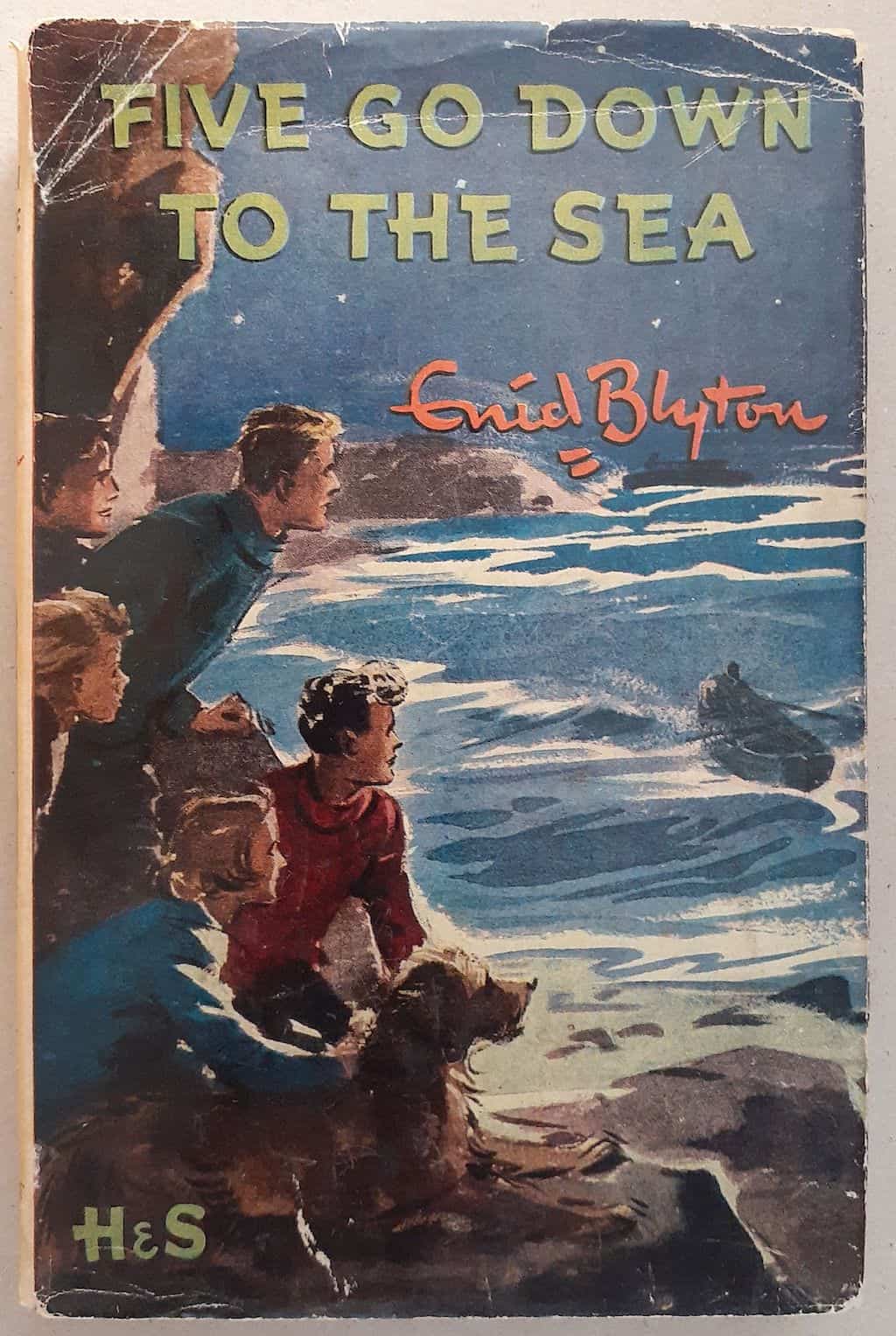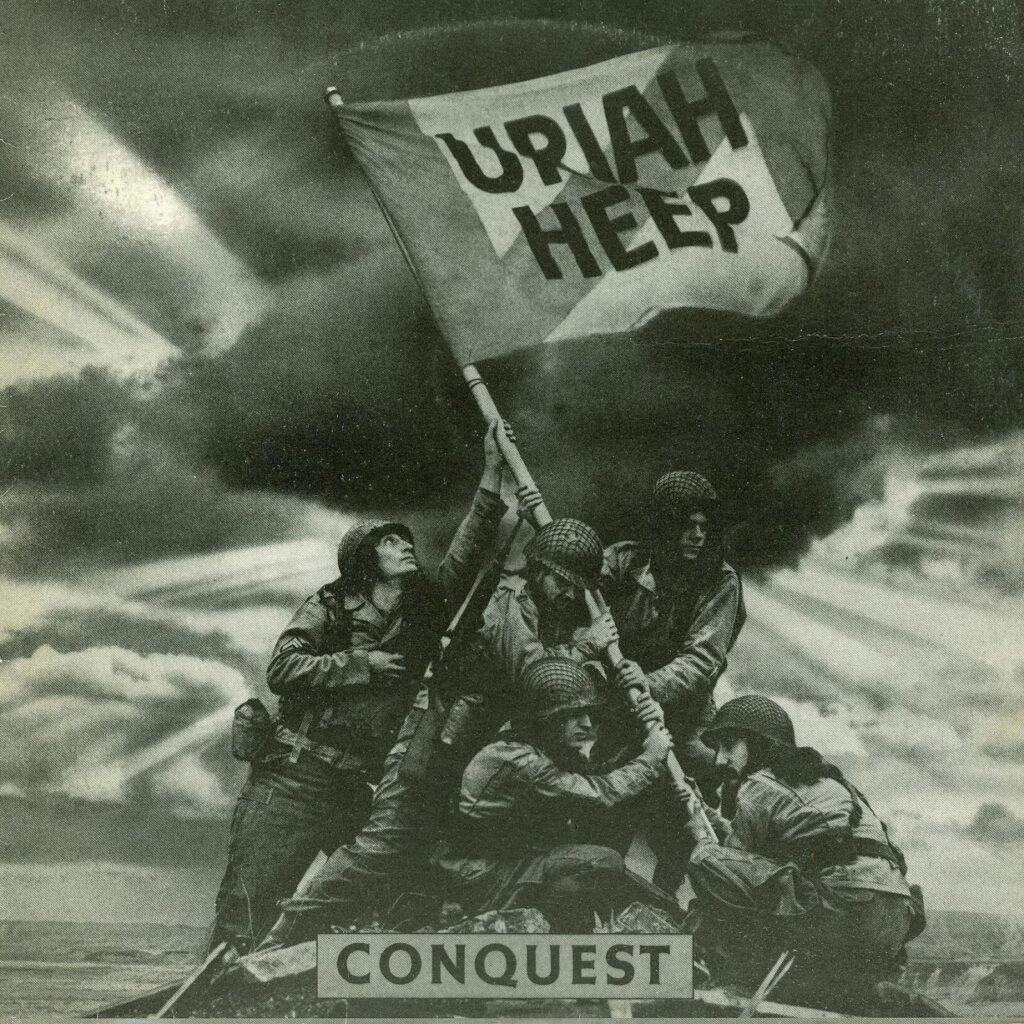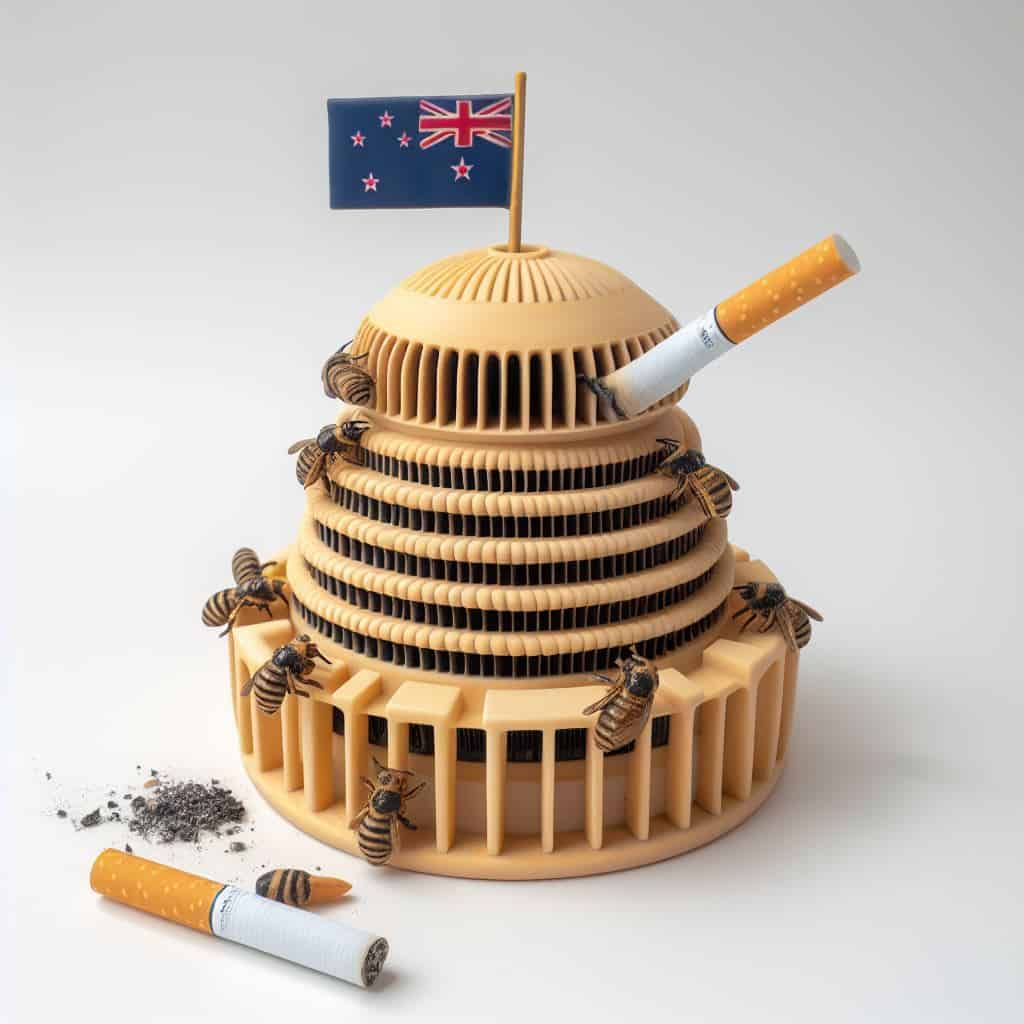GARY STEEL is a boomer dad with a 7-year-old who is just as infatuated with Enid Blyton’s creation as he was as a child back in the 1960s.
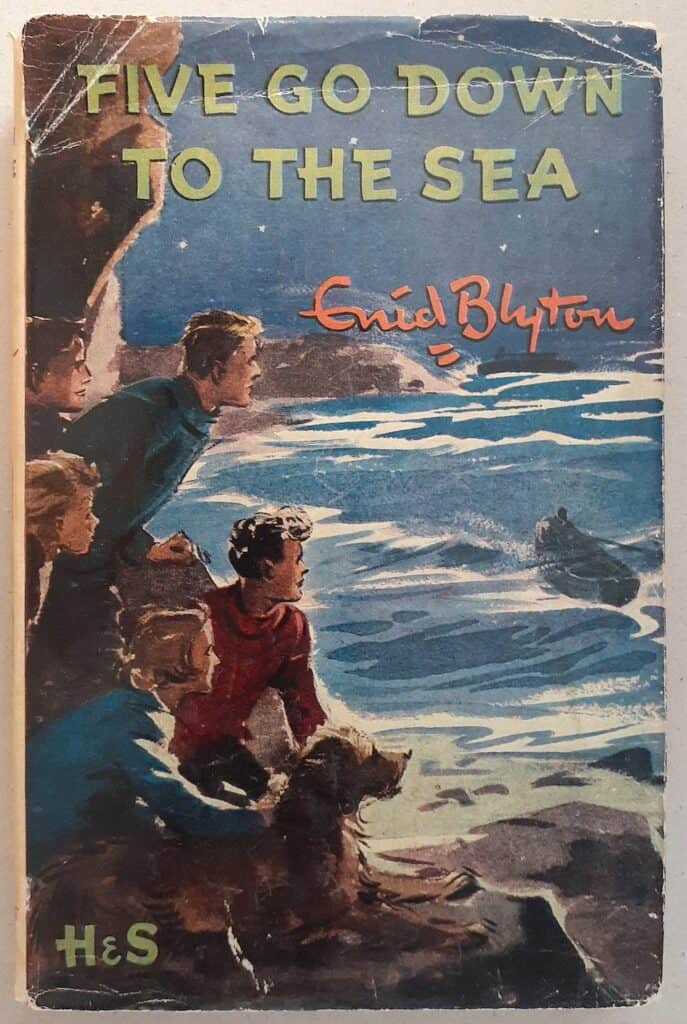 During the first seven years of my daughter’s life, I’ve read her a lot of books. For a long time she required pictures to illustrate the text, but for the last couple of years, as expected, chapter books have taken their place. There has been a seemingly endless parade of stories about ballerinas, fairies and unicorns. Oh, and horses… so many horses.
During the first seven years of my daughter’s life, I’ve read her a lot of books. For a long time she required pictures to illustrate the text, but for the last couple of years, as expected, chapter books have taken their place. There has been a seemingly endless parade of stories about ballerinas, fairies and unicorns. Oh, and horses… so many horses.
A few months back she surprised me by asking which books I loved to read at her age. My answer betrayed a lingering nostalgia for my absolute favourite, The Famous Five, Enid Blyton’s 21-book series of children’s adventure stories written to a formula and featuring the same five young characters, including their large scruffy dog.
Would you like to support our mission to bring intelligence, insight and great writing to entertainment journalism? Help to pay for the coffee that keeps our brains working and fingers typing just for you. Witchdoctor, entertainment for grownups. Riveting writing on music, tech, hi-fi, music, film, TV and other cool stuff. Your one-off (or monthly) $5 or $10 donation will support Witchdoctor.co.nz. and help us keep producing quality content. It’s really easy to donate, just click the ‘Become a supporter’ button below.
The next time we visited the local library, she was on a mission to acquaint herself with the books I had loved so much as a young lad in the 1960s. I was trepidatious because I’d seen reports over the years that Blyton’s books offered racist stereotypes and all sorts of other bad stuff and vaguely remembered hearing that her books had been removed from recommended reading lists.
What would I discover about the books I had been so fond of and what sort of impact had they had on my own attitude? And more importantly, would they be bad for my daughter? I consoled myself with the idea that if I came across any highly dubious passages I could explain them, and we could discuss the issues they raised. It helped that she wanted me to read her the books at bedtime, rather than read them herself. While she does read chapter books, she had a quick read of one of the Famous Five books and found it a bit hard. And that’s probably nothing to do with the reading level and everything to do with the quaint way it’s written.
The Famous Five books, after all, were first published between 1941 and 1962 and were full of a very English post-colonialist public school-educated tweeness in their conversational style, and certain common phrases had, by 2022, completely disappeared from the vernacular.
But what I wasn’t expecting was to discover that they were actually really good adventure yarns. I enjoyed reading them because of the cadence of the writing and my daughter was completely enraptured with the exciting stories, which invariably featured the kids and their dog becoming embroiled in an adventure in which they were imperilled by smugglers and villains and criminals and just bad people of various descriptions.
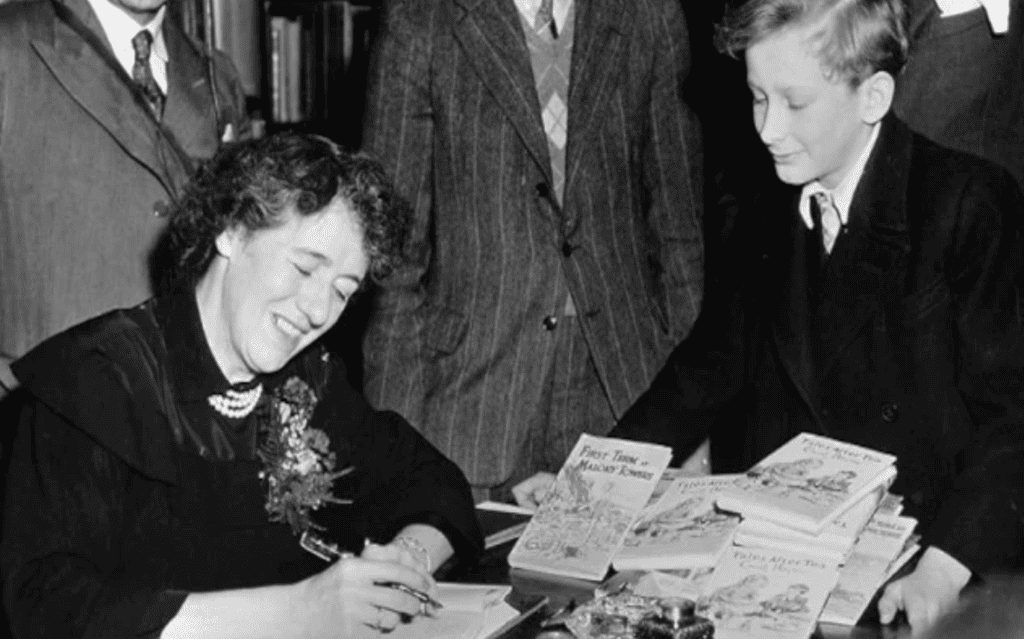 We always find siblings Julian, Dick and Anne on holiday with their friend Georgina (aka George) and her dog Timmy, usually at George’s parents’ cottage where we inevitably come up against her bad-tempered but clever scientist dad. Of course, the adults never believe the kids and they have to go on adventures and risk life and limb to deal to villains who are trying to a) rip them off blind b) rip off state secrets c) smuggle illicit goods or… well, you get the picture. The children always figure out a clever and ingenious way of getting the better of the villains and have a dashing adventure in the process, usually involving secret tunnels (for some reason known only to Blyton’s subconscious).
We always find siblings Julian, Dick and Anne on holiday with their friend Georgina (aka George) and her dog Timmy, usually at George’s parents’ cottage where we inevitably come up against her bad-tempered but clever scientist dad. Of course, the adults never believe the kids and they have to go on adventures and risk life and limb to deal to villains who are trying to a) rip them off blind b) rip off state secrets c) smuggle illicit goods or… well, you get the picture. The children always figure out a clever and ingenious way of getting the better of the villains and have a dashing adventure in the process, usually involving secret tunnels (for some reason known only to Blyton’s subconscious).
For a pulp book series like this – and apparently Blyton wrote them really fast – I’m surprised at how beautifully they’re written (and disappointed that even 21st-century reprints haven’t fixed some of the typographical errors!)
So many of the children’s books I’ve read to my daughter have ignored basic principles, like drawing engaging characters, making them believable and generating in the reader curiosity about them. So many contemporary children’s chapter books ignore the basic tenets of good storytelling and dribble on from chapter to chapter rather than providing cliff-hangers. And the heavy-handed way that (for instance) single parenthood is normalised just seems stupid.
The way Blyton describes the love between George and her dog Timmy, a large, heavy mutt who insists on sleeping on her legs, is lovely. There’s a delightful intimacy in the details she captures about the way that kids and animals play and communicate. Blyton got so much right that I find the criticisms of her work perplexing.
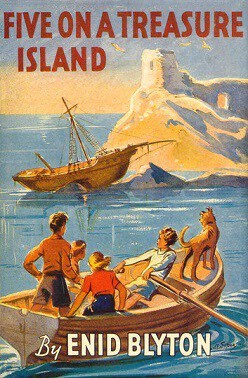 The stereotypes and prejudices encountered in The Famous Five books are redolent of the era, but they’re hardly worth censoring. Criminals tend to be low class and uneducated and – just as they are today to a degree – painted as all-bad rather than individuals who have had it tough and gone down the wrong path in life partly because of inequality.
The stereotypes and prejudices encountered in The Famous Five books are redolent of the era, but they’re hardly worth censoring. Criminals tend to be low class and uneducated and – just as they are today to a degree – painted as all-bad rather than individuals who have had it tough and gone down the wrong path in life partly because of inequality.
But the 1940s was very much like that. World War II was happening. The Germans and “the Japs” were constantly being painted by the propagandists as evil and sub-human, partly as a way to get the populace pumped up to win the war effort.
Other odd words and phrases abound. When the kids meet a boy who is part of an itinerant circus troupe, they describe his face as “ugly” and yet they love him and become good friends with the boy, who can’t read but is physically skilful. His “uncle” (who stole his parent’s money when they died and treats the boy like a slave) is a proper cad and of course a violent criminal. I thought there may be some gipsy-hating subtext but thankfully there was none. In another story, a dark-skinned boy is called Sooty, a name that would now be considered racist, but the boy himself is much-loved by the children and although he’s something of a comedian he’s not portrayed as in any way inferior to the other kids.
The five do a lot of things that modern parents would consider to be highly dangerous, but back in the 1940s they didn’t have regulations about unsupervised children or seatbelts in cars or many of the measures society has undertaken to protect minors over the past 30 or 40 years.
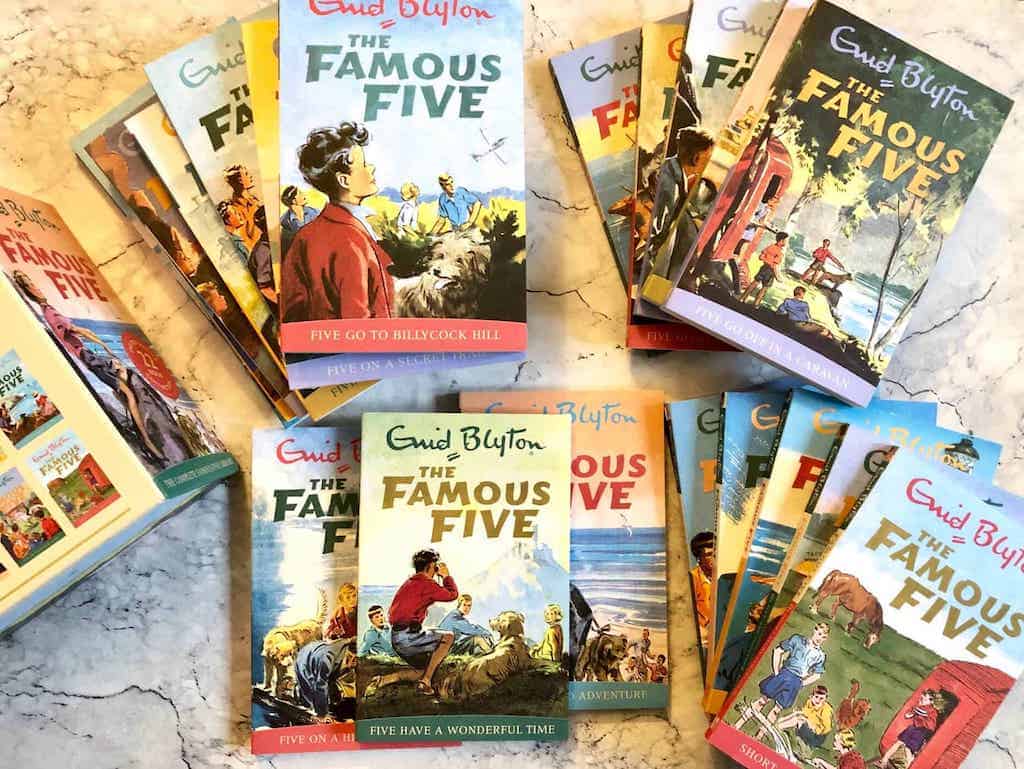 Of the books we’ve read so far the only depiction that’s felt wrong to me is that of a temporary cook and her son who are employed by George’s dad while her mum is away in hospital. It turns out that the cook and son (and freeloading dad) and even their dog are all criminal scum, and the children treat them like it. The cook’s son isn’t given the benefit of the doubt, and their poor dog is poorly treated as if the association is enough to prove you’re no good. I felt sorry for them, even though their parents were horrible kidnapping ratbags. Of course, this was an era when the lower classes still really struggled to earn a crust and basic education wasn’t guaranteed, so it was hardly surprising that some tried to rip off the rich.
Of the books we’ve read so far the only depiction that’s felt wrong to me is that of a temporary cook and her son who are employed by George’s dad while her mum is away in hospital. It turns out that the cook and son (and freeloading dad) and even their dog are all criminal scum, and the children treat them like it. The cook’s son isn’t given the benefit of the doubt, and their poor dog is poorly treated as if the association is enough to prove you’re no good. I felt sorry for them, even though their parents were horrible kidnapping ratbags. Of course, this was an era when the lower classes still really struggled to earn a crust and basic education wasn’t guaranteed, so it was hardly surprising that some tried to rip off the rich.
On the other hand, the five are laudable in many ways. Julian is the older boy and both intelligent and heroic. Dick is like his younger understudy but somehow, he’s less remarkable. Anne is the wee homemaker who is obsessed with food and its preparation and George is a determinedly short-haired girl who wants desperately to be a boy. I love the fact that she’s a really strong character and that the other kids accept her for who she is.
I found that as I read it my pronunciation was becoming more plummy and Queen’s English as I went on. I just couldn’t help it. The recurrent use of words like ‘queer’ and ‘gay’ with completely different meanings to the ones they’re now associated with were amusing. Chapter three of the first book, Five On A Treasure Island, even has a chapter called A Queer Story And A New Friend. No wonder the books have been satirised from time to time.
While we were lucky to get a 1960s reprint of Five On A Treasure Island with its original text, some of the books have been 2015 editions with sanitised language, which I think is a great shame. Apart from meddling with an author’s work, transplanting more modern or acceptable words in an attempt to appeal to a contemporary audience robs the books of their period charm. I can’t think of a single valid reason – except for perhaps selling more books – for meddling with the work like this. Would it ever happen with music or the visual arts?
I’ve loved reacquainting myself with The Famous Five at the age of 63 and the 7-year-old is looking forward to trying out The Secret Seven. I must confess that as a child, by the time I got to those books I had graduated from Blyton to slightly more sophisticated fare by authors like Alistair MacLean, but I’m now looking forward to experiencing The Secret Seven properly for the first time.

